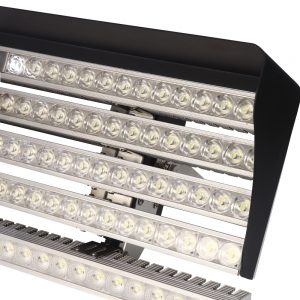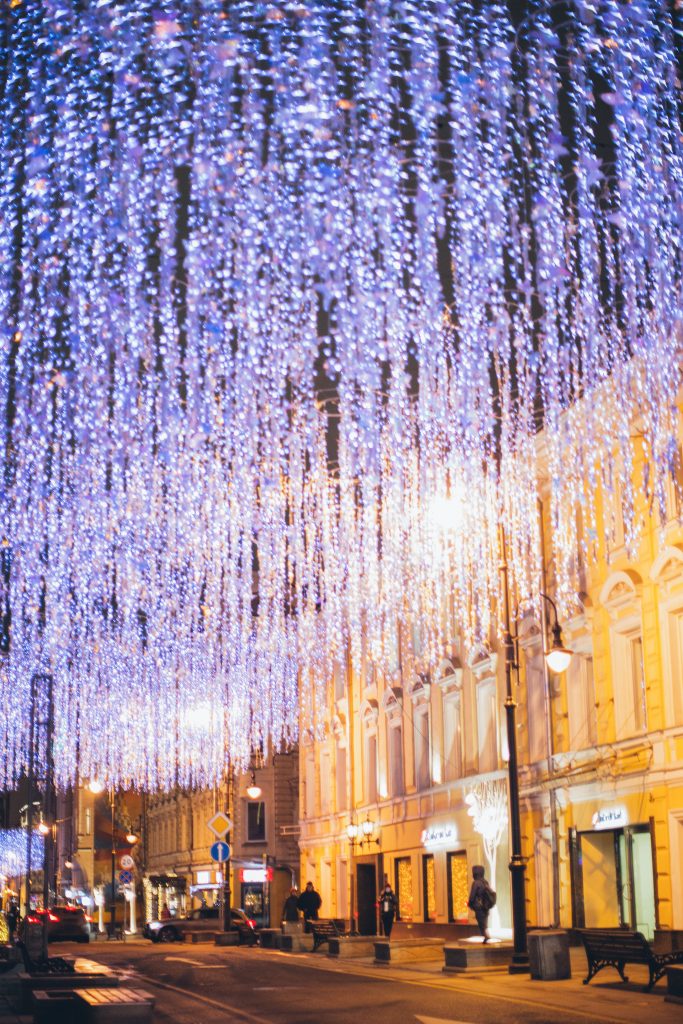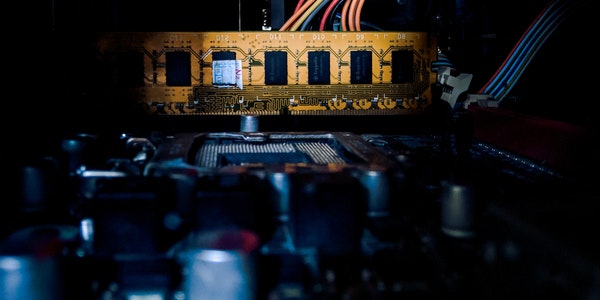4. Selection of Substrate Material
At present, the semiconductor material used in LEDs is mainly GaN. With the maturity of GaN epitaxial growth process and device manufacturing technology, solid-state light sources from infrared, visible, white light and a few ultraviolet bands have been formed; while GaN thin film materials have not yet been single crystal GaN is homoepitaxially grown on a related special-shaped support substrate by relying on metal organic vapor deposition (MOCVD). Therefore, the choice of substrate material will have a greater impact on the LED package and performance in the later stage.
At present, the requirements for the selection of GaN-based substrate materials are:
(1) The crystal structure matches, and the crystal structure and composition are similar;
(2) Lattice matching, substrate material and epitaxial film lattice matching;
(3) Thermal expansion matching principle: the thermal expansion coefficient of the epitaxial film and the substrate material are similar;
(4) The principle of stability, the substrate material needs to have quite good chemical stability, and cannot chemically react with the epitaxial film, which will reduce the quality of the epitaxial film;
(5) The substrate used is easy to grow larger size crystals;
(6) Easy to integrate and good heat dissipation effect;
(7) The preparation process of the substrate material is simple, easy to process, and the cost cannot be too high;
(8) The conductivity of the substrate is required to be good to facilitate the preparation of the substrate electrode.
Currently, GaN substrate materials mainly include:
(1) Sapphire (α-Al2O3) substrate Sapphire is the most commonly used substrate for GaN epitaxy. As a substrate material, sapphire has the advantages of chemical stability at high temperature (1000℃), easy to obtain large size, low price, etc.; the disadvantage is that there is a large lattice mismatch (16%) and thermal expansion mismatch between it and GaN , The large lattice mismatch leads to a high dislocation density in the GaN epitaxial layer, and the higher dislocation density will reduce the carrier mobility and minority carrier lifetime, thereby reducing the thermal conductivity. The thermal mismatch will generate stress during the cooling process of the epitaxial layer, leading to cracks and ultimately reducing product performance. Sapphire is currently the main substrate material for GaN-based blue-green LEDs. Under the current circumstances, there is no other substrate material that can replace it.
(2) Silicon carbide (SiC) substrate.
SiC is another important semiconductor substrate material. Due to the low resistance of SiC, another electrode can be made. The lattice constant and thermal expansion coefficient are closer to GaN materials. The application of 6H-SiC as a substrate material is second only to sapphire, and its lattice mismatch with GaN is about 3.5% . In addition, 6H-SiC itself has blue light-emitting characteristics and is a low-resistance material, which can be used to make electrodes. This makes it possible for the device to test the epitaxial film before packaging, thereby enhancing the competitiveness of 6H-SiC as a substrate material.
(3) Zinc oxide (ZnO) substrate. Since ZnO and GaN have similar properties, the mismatch between ZnO and GaN in the α-axis direction is 1.9%, and the mismatch in the C-axis direction is 0.4%. Compared with α-A12O3, ZnO has less mismatch and better matching. In addition, ZnO also has the advantages of easy preparation and easy corrosion by acid. In some applications, the GaN layer can be separated from the substrate by selective etching of ZnO [10]. At the same time, since zinc oxide itself is also an important electroluminescent material, compared with other materials, it can carry out homogeneous epitaxy, and its development advantages are obvious.
(4) Silicon and gallium arsenide. Compared with sapphire and SiC, Si materials have the advantages of low cost, large area, high quality, good electrical and thermal conductivity, and the silicon process technology is mature. The growth of GaN films on Si substrates is expected to realize the integration of optoelectronics and microelectronics. In addition, Si or GaAs substrates are very cheap, and the preparation process is mature and can be obtained in a large area. Moreover, using these substrates to grow GaN materials is expected to integrate GaN optoelectronic devices with mature Si and GaAs electronic devices in the future. However, due to the huge lattice mismatch and thermal mismatch between the Si substrate and the GaN epitaxial layer, this causes a large number of dislocations and cracks in the GaN material on the Si substrate, which is the growth and development of GaN on the Si substrate. Research has set up obstacles.
5. Advanced material preparation technology.
The preparation of high-quality GaN bulk single crystal materials and thin-film materials is a prerequisite for the research and development of III-nitride light-emitting devices and electronic devices, and to ensure the performance and reliability of the devices. Because the melting point of GaN is as high as about 1700°C, it is difficult to use molten liquid GaN to prepare bulk single crystal materials. Although high temperature and high pressure technology is used, only needle-shaped or small-sized flake GaN crystals can be obtained.
At present, there are several methods for growing epitaxial layers. Among the three methods, MOCVD is the most popular for large-scale production. MBE is generally used for laboratory epitaxial growth due to its slow deposition rate, while HVPE is difficult to control its film thickness. Rarely used.
(1) Metal-organic chemical vapor deposition (MOCVD) MOCVD is the abbreviation of metal-organic chemical vapor deposition, also known as MOVPE (metal organic vapor phase epitaxy). It is on a substrate where the reactant atoms are epitaxially along the crystal lattice at a certain temperature. Its working principle is roughly as follows: when the organic source is at a certain constant temperature, its saturated vapor pressure is constant. By controlling the flow of the carrier gas through a flow meter, the amount of organic source carried by the carrier gas flow through the organic source can be known. The gas carries different sources and is transported to the entrance of the reaction chamber for mixing, and then transported to the substrate, where a chemical reaction occurs under the action of high temperature, and epitaxial growth is performed on the substrate. The by-products of the reaction are discharged through tail gas.
(2) Molecular beam epitaxy (MBE) Molecular beam epitaxy is an ultra-high vacuum system in which Ga, N or other atoms are ejected from the beam source onto the heated substrate surface. These atoms undergo complex reactions on the surface to form GaN materials. MBE is basically a development of vacuum deposition. Because it is vacuum deposition, the growth of MBE is mainly controlled by the reaction kinetics of the molecular beam and the crystal surface, and its growth process is a non-equilibrium process.
(3) Halide vapor phase epitaxy (HVPE) The HVPE method uses GaCI and NH3 as sources. The growth rate is very fast, reaching tens of microns per hour. It is very suitable for the study of GaN lateral epitaxial overgrowth (LEO) and provide thick Self-supporting GaN substrate. The disadvantage of HVPE is that it is difficult to accurately control the film thickness, and the reaction gas is corrosive to the equipment, which affects the improvement of the purity of the GaN material.
Comparison of production technology of the world’s main semiconductor luminescent materials
In terms of sapphire crystal and wafer preparation, production and technology are mainly concentrated in Japan, the United States, Russia and other countries. Among them, the usable size of crystals produced in Russia can reach more than 100mm in diameter. At present, the major manufacturer that can realize the commercial application of GaN epitaxial luminescent material LEDs grown on sapphire substrates is Japan’s Nichia. The company has occupied the top of the mainstream technology through patent applications and other means, so that companies in other countries can only look back.
Compared with other countries, Chinese research is still very backward. Zhejiang Juhua Group, Shanghai Institute of Optics and Fine Mechanics, Shenzhen Aopu Optoelectronics Co., Ltd., Shenzhen Miaohao Optoelectronics Co., Ltd. and other units are engaged in the growth and wafer processing of sapphire crystals. At present, the mature substrate wafer size available in China is 2 inches Mainly, in terms of crystal size, the crystal grown by Zhejiang Juhua Company is the largest, and the crystal diameter displayed at the Shenzhen Optical Expo in 2004 reached 150mm. At present, the price of sapphire wafers has fallen, and the price of 50.8mm wafers is around US$25.
For SiC, American Cree was the first company to research and produce SiC crystals and wafers. They were able to produce 2- to 3-inch SiC wafers between 1997 and 1998, and later cooperated with Japan’s Nichia Chemical Company to produce blue and violet LEDs. Because the price of SiC material is higher than that of sapphire substrate, the commercialization of this material lags far behind mainstream sapphire substrate materials. China has lagged behind foreign countries in SiC single crystal and substrate research for 5 to 8 years. The State Key Laboratory of Crystal Materials of Shandong University has completed the “Large Size SiC Single Crystal Substrate Material Research” with the support of the national “863” program. The project uses a self-designed crucible and temperature field to stably and repeatedly grow 6H-SiC crystals with a diameter greater than 50.8mm and a crystal thickness greater than 20mm. The Institute of Physics, Chinese Academy of Sciences successfully developed a high-quality polytype 6H-SiC single crystal with a diameter of 50.8 mm and a thickness of 25.4 mm.
As for ZnO, 50.8mm ZnO wafers are currently sold in Japan, the United States and Russia. In January 2005, Japan took the lead in successfully developing electroluminescent LED based on zinc oxide homogenous pn junction. Compared with existing GaN products, this zinc oxide blue light-emitting tube is expected to have 10 times the brightness of the latter. Price and energy consumption are only 1/10 of the latter.
The research foundation of zinc oxide substrates in China is very weak, and the research on crystal growth technology has just started, and it is only in recent years that the country has made great efforts to study the growth technology of zinc oxide crystals. In June 2005, a research team led by Zhang Changlong, a senior engineer from the China National Special Mineral Materials Engineering Technology Research Center (Guilin), used the temperature difference hydrothermal method to grow 15.0mm×15.6mm×6.1mm ZnO in a large-diameter autoclave Crystal. It is reported that this is China’s latest progress in ZnO crystal research.
In terms of GaN epitaxy, in addition to research units such as Tsinghua University, Peking University, Nanchang University, and the Institute of Semiconductors of the Chinese Academy of Sciences, Shanghai Peking University Blu-ray Technology Co., Ltd., Nanchang Xinlei Optoelectronics Technology Co., Ltd., and Jiangxi Lianchuang Optoelectronics Technology Co., Ltd. The production and research of epitaxial wafers are being carried out by other units. Peking University used the LP-MOCVD system to grow an InGaN/GaN MQW violet LED structure on the (0001) surface of a sapphire (α-A12O3) substrate. The photoluminescence test shows that the peak wavelength of the structure is 399.5nm, the FWHM is 15.5nm, and the wavelength uniformity is good. At present, Nanchang University has completed the growth of GaN epitaxial layer materials on silicon substrates. From the initial MBE method to grow cracked LEDs, it has been developed to use the production MOCVD system to grow crack-free LEDs. The working voltage has dropped from more than 10V to 3.6 V. The intensity of electroluminescence has also risen from microwatts to nearly milliwatts. This technology has reached the international advanced level.
Standard Situation of Semiconductor Materials for LED
In order to develop lighting LEDs, developed countries attach great importance to the research of LED test methods and standards. For example, the National Institute of Standards and Testing (NIST) in the United States is a world-renowned testing and research organization. At present, they have gathered internationally renowned testing experts to carry out LED testing research, focusing on the luminous characteristics, temperature characteristics and light decay characteristics of LEDs. , Trying to establish a complete set of LED testing methods and technical standards, has walked in the forefront of the world in LED testing. Japan has also established the “White LED Test Research Committee” in the industry to study the testing methods and standards of white LEDs for lighting.
At present, there are already SEMI M3-0304 “Specification for Sapphire Monocrystalline Polished Substrate”, SEMI M23-0703 “Specification for Indium Phosphide Monocrystalline Polished Wafer”, SEMI M55-0705 “Specification for Silicon Carbide Monocrystalline Polished Wafer” in the international SEMI standard “, SEMI M65-0306 “Specifications for Sapphire Substrates for Compound Semiconductor Epitaxial Wafers” and other related material standards and testing method standards; China also has some national standards, such as GB/T 20230-2006 “Indium Phosphide Single Crystal”. Since China’s LED semiconductor material industry has not yet formed a certain scale, the time for standard formulation is not yet ripe, but for the long-term development of the LED industry, pre-research on relevant foreign material standards should be conducted to master and understand the development of foreign advanced material standards. The land serves my country’s upcoming industry and provides a solid material standard foundation for the LED industry.
Sum up
In summary, for semiconductor materials for LED chips, we should see the following trends: (1) The use of silicon substrates to grow GaN pn junction light-emitting diodes is a dream of the entire LED industry. If it is realized in production, the technology will If combined with mature silicon material processing and packaging technologies, the development of GaN will enter another period of rapid development.
(2) Due to the development and application of cheap luminescent materials, ZnO research will become the next hot spot. If high-quality ZnO pn junction electro-laser emitters LD can be manufactured, the LD application era of ZnO will begin.




